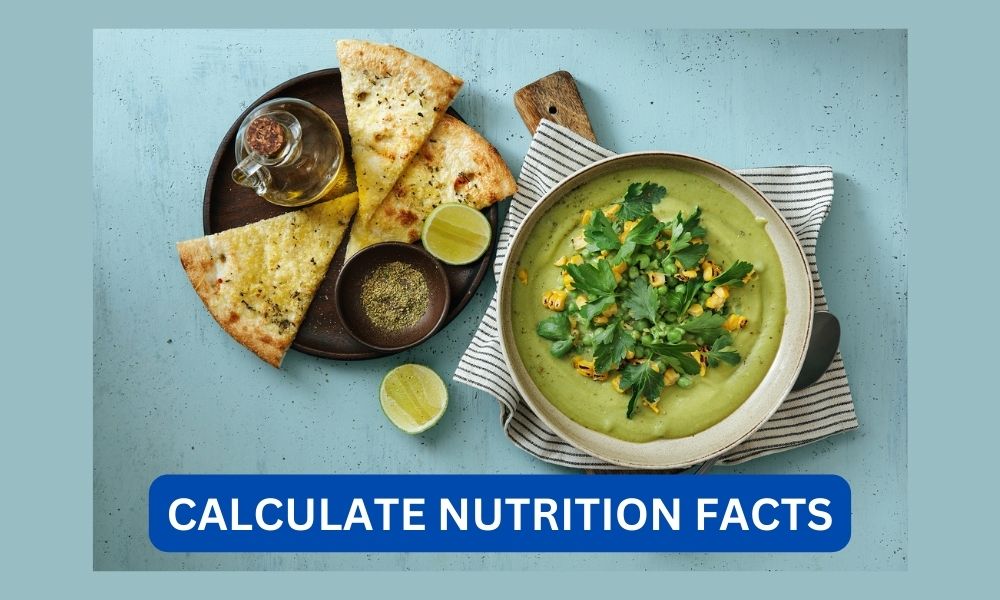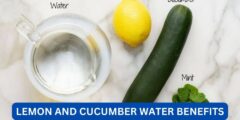Cooking and baking are not just about creating delicious meals and treats, but also about providing our bodies with the necessary nutrients to function properly. As more and more people become conscious of their health and well-being, knowing the nutrition facts of a recipe has become increasingly important. However, calculating nutrition facts for a recipe can seem like a daunting task, especially for those who are new to cooking and baking. In this article, we will guide you through the process of calculating nutrition facts for a recipe, so you can make informed decisions about your meals and snacks.
Contents
Why Calculate Nutrition Facts?
Before we dive into the process of calculating nutrition facts for a recipe, let’s first understand why it is important to do so. Knowing the nutrition facts of a recipe can help you make healthier choices and maintain a balanced diet. It can also be beneficial for those with specific dietary restrictions or health conditions, as they can easily track their intake of certain nutrients.
Additionally, calculating nutrition facts can also help you make adjustments to a recipe to suit your dietary needs. For example, if you are trying to reduce your intake of sodium, you can use the nutrition facts to determine how much salt to use in a recipe. It can also be helpful for those trying to lose or maintain weight, as they can keep track of their calorie intake.
Read:how to read a recipeUnderstanding Nutrition Labels
Before we get into the process of calculating nutrition facts for a recipe, it is important to understand the information that is typically included on a nutrition label. This will help you make sense of the numbers and percentages that you will be calculating.
The following are the key components of a nutrition label:
- Serving size: This is the amount of food that is considered one serving. It is important to note that the serving size may not be the same as the portion size that you consume.
- Calories: This is the total number of calories in one serving of the food.
- Total fat: This includes all types of fat, such as saturated, trans, and unsaturated fats.
- Cholesterol: This is the amount of cholesterol in one serving of the food.
- Sodium: This is the amount of sodium in one serving of the food.
- Total carbohydrates: This includes all types of carbohydrates, such as sugars, fiber, and starches.
- Protein: This is the amount of protein in one serving of the food.
- Vitamins and minerals: This section lists the percentage of daily value for various vitamins and minerals in one serving of the food.
It is important to note that the nutrition label is based on a 2,000 calorie diet, which may not be suitable for everyone. The percentages listed for each nutrient are also based on this calorie intake. Therefore, it is important to adjust the numbers according to your own calorie needs.
Read:can string bean recipesCalculating Nutrition Facts for a Recipe
Now that we have a basic understanding of nutrition labels, let’s move on to the process of calculating nutrition facts for a recipe. There are two main steps involved in this process: determining the serving size and calculating the nutrition information for each ingredient.
Determining the Serving Size
The first step in calculating nutrition facts for a recipe is to determine the serving size. This will depend on the type of recipe and the number of servings it yields. For example, if you are making a batch of cookies that yields 24 cookies and you plan on eating two cookies per serving, then the serving size would be two cookies.
It is important to be realistic when determining the serving size. If you know that you will likely eat more than the recommended serving size, it is better to adjust the numbers accordingly. This will give you a more accurate representation of the nutrition information for your actual portion size.
Calculating Nutrition Information for Each Ingredient
Once you have determined the serving size, the next step is to calculate the nutrition information for each ingredient in the recipe. This can be done by using a nutrition calculator or by manually calculating the information using the nutrition label on the ingredient’s packaging.
Read:Did butterfinger change back to original recipeIf you are using a nutrition calculator, simply input the amount of each ingredient used in the recipe and the calculator will provide you with the nutrition information. However, if you are manually calculating the information, follow these steps:
- Start by determining the serving size for each ingredient. This may be different from the serving size of the final recipe.
- Next, multiply the serving size by the amount of each ingredient used in the recipe. This will give you the total amount of each nutrient in the entire recipe.
- Divide the total amount of each nutrient by the number of servings in the recipe. This will give you the amount of each nutrient per serving.
For example, if a recipe calls for 1 cup of flour and the nutrition label on the flour packaging states that 1 cup contains 400 calories, 2 grams of fat, and 80 grams of carbohydrates, then the nutrition information for the flour in the recipe would be:
- Calories: 400
- Total fat: 2 grams
- Total carbohydrates: 80 grams
Repeat this process for each ingredient in the recipe to get the total nutrition information for the entire recipe.
Adjusting for Recipe Variations
It is important to note that the nutrition information for a recipe may vary depending on the ingredients used. For example, using whole wheat flour instead of all-purpose flour will result in a different nutrition profile. Therefore, it is important to adjust the numbers accordingly if you make any substitutions or variations to the original recipe.
You can do this by using a nutrition calculator or by manually calculating the nutrition information for the substituted ingredient and adjusting the numbers accordingly.
Case Study: Calculating Nutrition Facts for a Banana Bread Recipe
Let’s take a look at a real-life example of calculating nutrition facts for a recipe. We will use a simple banana bread recipe as an example.
Banana Bread Recipe:
- 1 1/2 cups all-purpose flour
- 1 teaspoon baking soda
- 1/4 teaspoon salt
- 1/2 cup unsalted butter, softened
- 1/2 cup brown sugar
- 2 eggs
- 3 ripe bananas, mashed
- 1/2 cup chopped walnuts (optional)
Nutrition Information per Serving (1 slice):
- Calories: 250
- Total fat: 12 grams
- Cholesterol: 60 mg
- Sodium: 200 mg
- Total carbohydrates: 33 grams
- Protein: 4 grams
To calculate the nutrition information for this recipe, we first need to determine the serving size. Let’s say we cut the banana bread into 12 slices, so the serving size would be 1 slice.
Next, we need to calculate the nutrition information for each ingredient. We will use a nutrition calculator for this example.
- All-purpose flour (1 1/2 cups):
- Calories: 600
- Total fat: 0 grams
- Cholesterol: 0 mg
- Sodium: 0 mg
- Total carbohydrates: 126 grams
- Protein: 18 grams
- Baking soda (1 teaspoon):
- Calories: 0
- Total fat: 0 grams
- Cholesterol: 0 mg
- Sodium: 0 mg
- Total carbohydrates: 0 grams
- Protein: 0 grams
- Salt (1/4 teaspoon):
- Calories: 0
- Total fat: 0 grams
- Cholesterol: 0 mg
- Sodium: 0 mg
- Total carbohydrates: 0 grams
- Protein: 0 grams
- Unsalted butter (1/2 cup):
- Calories: 800
- Total fat: 92 grams
- Cholesterol: 240 mg
- Sodium: 0 mg
- Total carbohydrates: 0 grams
- Protein: 0 grams
- Brown sugar (1/2 cup):
- Calories: 400
- Total fat: 0 grams
- Cholesterol: 0 mg
- Sodium: 0 mg
- Total carbohydrates: 108 grams
- Protein: 0 grams
- Eggs (2 eggs):
- Calories: 140
- Total fat: 10 grams
- Cholesterol: 372 mg
- Sodium: 140 mg
- Total carbohydrates: 0 grams
- Protein: 12 grams
- Ripe bananas (3 bananas):
- Calories: 300
- Total fat: 0 grams
- Cholesterol: 0 mg
- Sodium: 0 mg
- Total carbohydrates: 78 grams
- Protein: 6 grams
- Chopped walnuts (1/2 cup):
- Calories: 400
- Total fat: 40 grams
- Cholesterol: 0 mg
- Sodium: 0 mg
- Total carbohydrates: 8 grams
- Protein: 8 grams
Now, we can add up the nutrition information for each ingredient to get the total nutrition information for the entire recipe:
- Calories: 2640
- Total fat: 142 grams
- Cholesterol: 672 mg
- Sodium: 140 mg
- Total carbohydrates: 320 grams
- Protein: 44 grams
Finally, we can divide these numbers by the number of servings (12) to get the nutrition information per serving:
- Calories: 220
- Total fat: 12 grams
- Cholesterol: 56 mg
- Sodium: 12 mg
- Total carbohydrates: 27 grams
- Protein: 4 grams
As you can see, the nutrition information for this banana bread recipe is quite different from the nutrition information listed on the nutrition label for a store-bought banana bread. This is because homemade recipes tend to use more natural and whole ingredients, resulting in a healthier and more nutritious option.
Conclusion:
Calculating nutrition facts for a recipe may seem like a daunting task, but it is an important step in making informed decisions about your meals and snacks. By understanding the components of a nutrition label and following the steps outlined in this article, you can easily calculate the nutrition information for any recipe. Remember to adjust the numbers for any variations or substitutions to get an accurate representation of the nutrition facts. With this knowledge, you can make healthier choices and maintain a balanced diet for a healthier and happier you.









